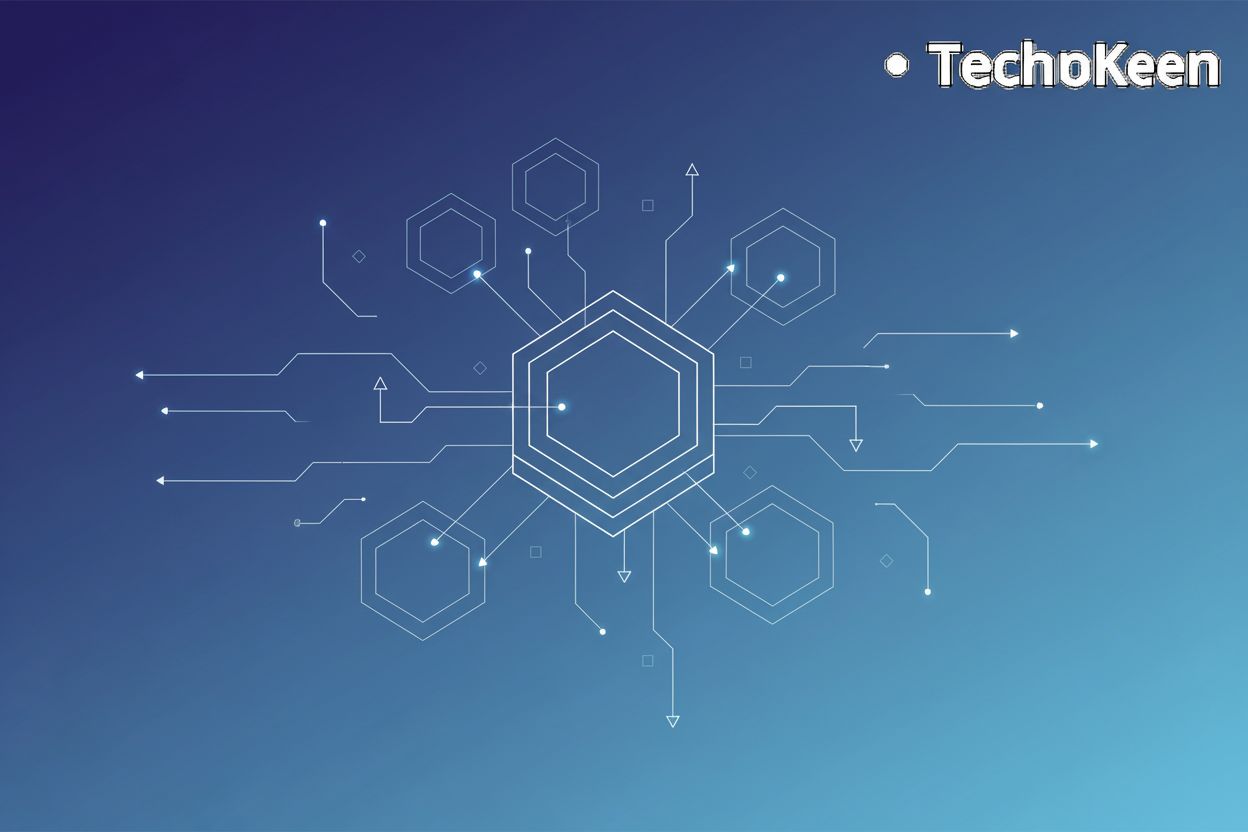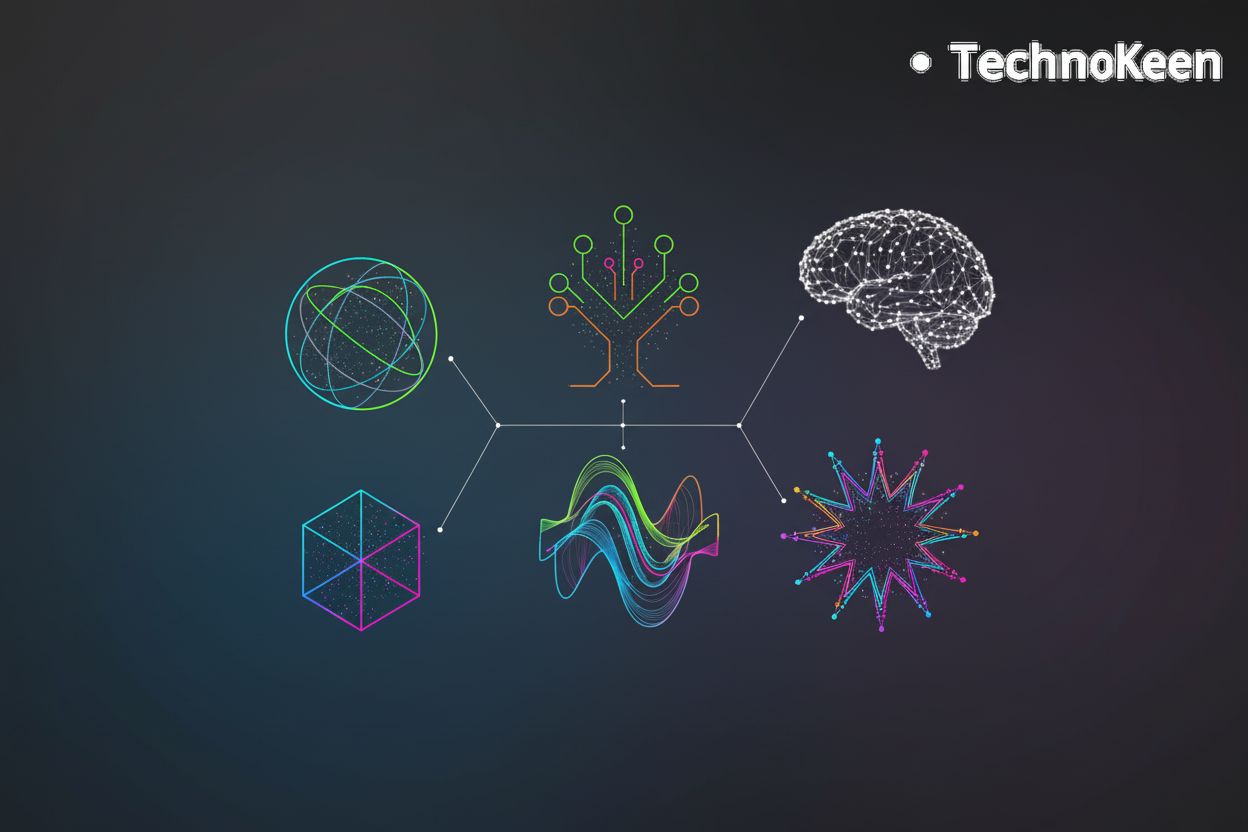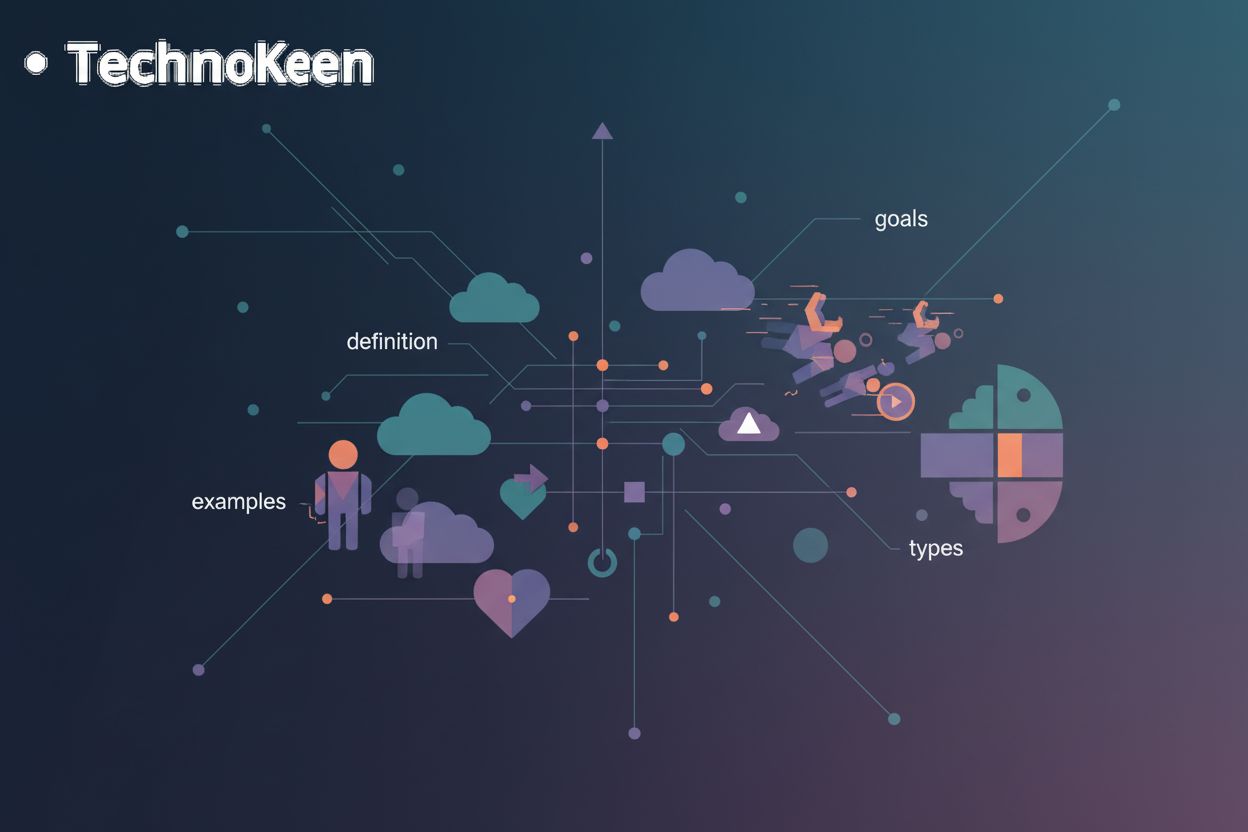Orchestrating the Future: Graph Neural Networks for Intelligent AI Agent Coordination
TL;DR
The Rise of Intelligent AI Agents and the Coordination Challenge
ai agents are rapidly evolving, and their ability to coordinate effectively is becoming paramount. (The AI Agent Revolution: Navigating the Future of Human-Machine ...) But how can we ensure these agents work together seamlessly, especially in complex environments?
ai agents are no longer simple, isolated programs. They are becoming more sophisticated and integrated into various business processes, from customer service to supply chain management. For example, in healthcare, ai agents can coordinate to analyze patient data, schedule appointments, and manage medication adherence. (AI with agency: a vision for adaptive, efficient, and ethical ...)
Effective coordination is crucial for maximizing their collective intelligence and efficiency. When ai agents coordinate well, they can achieve complex tasks that would be impossible for a single agent to handle. (A technical guide to agent orchestration with Hypermode) Consider a retail setting where one ai agent manages inventory, another handles customer orders, and a third optimizes delivery routes.
Traditional methods often struggle to handle the complexity of multi-agent interactions. Simple rule-based systems or basic communication protocols can quickly become overwhelmed as the number of agents and the intricacy of their tasks increase. This is where more advanced techniques, such as graph neural networks, come into play.
Coordination unlocks the full potential of ai agents by enabling them to work together seamlessly. Improved coordination leads to optimized workflows, faster decision-making, and enhanced business outcomes. Imagine a financial institution where ai agents collaborate to detect fraud, manage risk, and personalize customer investment strategies.
"Reliable and Efficient Multi-Agent Coordination via Graph Neural Network Variational Autoencoders" mengyuest details one approach to solving these challenges.
Poor coordination can result in conflicts, inefficiencies, and missed opportunities. For instance, if different ai agents in a marketing department are pursuing conflicting strategies, it can lead to wasted resources and a disjointed customer experience. In the next section, we'll explore how graph neural networks (gnns) can provide a powerful solution for orchestrating intelligent ai agent coordination.
Introducing Graph Neural Networks: A New Paradigm for AI Agent Orchestration
Graph neural networks (gnns) are revolutionizing how ai agents coordinate, but what exactly are these networks, and how do they model complex interactions? Think of gnns as a special type of ai designed to understand and work with data that's structured like a network or a graph.
- gnns are a type of neural network designed to operate on graph-structured data. This means they're built to understand data where relationships between different pieces of information are just as important as the information itself. For instance, in a social network, the connections between people are as crucial as their individual profiles.
- They excel at capturing relationships and dependencies between entities in a network. Traditional neural networks often struggle with this type of data, but gnns are specifically designed to analyze and learn from these connections. This makes them ideal for understanding complex systems where interactions are key.
- gnns can learn representations of nodes, edges, and entire graphs, making them ideal for modeling complex systems. This means they can understand the properties of individual elements within a network, the relationships between those elements, and the overall structure of the network itself. This comprehensive understanding is essential for modeling and optimizing complex systems.
Imagine a supply chain where each supplier, manufacturer, and distributor is a node, and the flow of goods is an edge. A gnn can analyze this network to optimize delivery routes and minimize disruptions.
- ai agent systems can be represented as graphs, where agents are nodes and interactions are edges. If you apply this to a team of robots in a warehouse, each robot becomes a node, and their communication or collaboration becomes an edge. This representation allows the gnn to understand the entire team dynamic.
- gnns can learn the dynamics of these interactions, enabling them to predict agent behavior and optimize coordination strategies. By analyzing past interactions, gnns can anticipate how agents will behave and adjust strategies to improve their teamwork. This is similar to how a sports coach analyzes player interactions to create better game plans.
- Different gnn architectures offer various ways to aggregate and process information within the graph. For instance, Graph Convolutional Networks (gcnns) are a foundational architecture that aggregates information from neighboring nodes. Graph Attention Networks (gats), on the other hand, use attention mechanisms to weigh the importance of different connections, allowing the network to focus on the most relevant interactions. Choosing between them often depends on the specific task and the nature of the relationships within the graph.
As previously discussed, poor coordination can result in conflicts, inefficiencies, and missed opportunities. Next, we will explore how gnns learn and adapt to optimize ai agent coordination strategies.
GNNs in Action: Enhancing Key Aspects of AI Agent Systems
ai agents are finding their place in more and more systems, but how do we ensure these agents are secure and governed properly? Graph neural networks (gnns) can play a key role in addressing these challenges by enhancing ai agent security and ensuring compliance with governance policies.
gnns can optimize the deployment of ai agents across distributed environments. By analyzing the network as a graph, gnns can allocate resources efficiently. This ensures agents are placed in optimal locations for collaboration.
- gnns analyze network topology to determine the best placement for each agent. This optimizes communication pathways and minimizes latency.
- They dynamically adapt to changing network conditions. This allows for scaling ai agent systems efficiently.
- gnns can balance workloads across different agents. This prevents bottlenecks and ensures smooth operation.
For example, in a smart city, gnns can manage the deployment of ai agents that control traffic lights. These agents can be placed to minimize congestion and improve traffic flow based on real-time conditions.
gnns can detect malicious behavior and anomalies in ai agent systems. They identify compromised agents and prevent them from disrupting the network. gnns can also enforce access control policies and ensure compliance with regulatory requirements.
- gnns monitor agent interactions to identify deviations from normal behavior. They can flag potentially malicious activities.
- They recognize compromised agents by analyzing their communication patterns and resource usage. This prevents further damage.
- gnns enforce access control policies by verifying agent identities and permissions. This limits access to sensitive data and resources.
A recent study highlighted the potential of gnns in cybersecurity, noting their ability to detect complex attack patterns in network traffic Reliable and efficient multi-agent coordination via graph neural network variational autoencoders.
For instance, in a financial institution, gnns can monitor ai agents that manage transactions. The gnn can detect fraudulent activities and prevent unauthorized access to customer accounts.
As ai agents become more integrated into critical business processes, ensuring their security and governance is essential. gnns provide the tools to monitor, manage, and protect these systems. In the next section, we will explore how gnns learn and adapt to optimize ai agent coordination strategies.
Real-World Applications: GNNs Transforming Enterprise AI
ai business automation stands to gain a lot from gnns. By coordinating ai agents to perform tasks efficiently, gnns can automate complex business processes. This leads to optimized workflows, reduced bottlenecks, and improved overall productivity.
- gnns excel at automating tasks that require understanding complex relationships between different entities.
- Consider supply chain management, where gnns can coordinate ai agents to optimize logistics, predict demand, and manage inventory.
- In customer service automation, gnns can power ai agents that handle inquiries, resolve issues, and personalize customer experiences.
For example, ai agents can process documents, extract data, and route information to the appropriate departments in document processing. This coordinated approach ensures that tasks are completed quickly and accurately.
- gnns can analyze workflows to identify inefficiencies and areas for improvement.
- By optimizing the sequence of tasks and allocating resources effectively, gnns can reduce delays and improve overall productivity.
- This is particularly valuable in industries where time is of the essence, such as finance and healthcare.
For example, in a healthcare setting, gnns can coordinate ai agents to analyze patient data, schedule appointments, and manage medication adherence. This ensures that patients receive the care they need in a timely and efficient manner.
- In finance, gnns can help automate tasks such as fraud detection, risk assessment, and compliance monitoring.
- In retail, gnns can optimize inventory management, personalize customer recommendations, and streamline supply chain operations.
- In hr, gnns can automate candidate screening, employee onboarding, and performance management.
As mentioned in the GNNs in Action section, gnns can be used in smart cities to optimize traffic flow. Next, we'll examine how gnns can enhance ai customer service and conversational ai.
Emerging Trends: GNNs and the Future of AI Agent Coordination
Have you ever wondered how to optimize the movements of hundreds of robots in a warehouse to prevent gridlock? Emerging techniques leveraging graph neural networks (gnns) show potential to solve these complex challenges.
Qgnns combine the strengths of gnns with quantum computing. This synergy allows for solving complex problems more efficiently. Qgnns can significantly accelerate gnn training and inference. This enables faster decision-making in ai agent systems.
- Qgnns hold particular promise for applications involving large-scale graphs. They are also valuable for complex optimization problems. Imagine using qgnns to optimize traffic flow in a smart city, where the network of roads and vehicles forms a massive, dynamic graph. The quantum advantage could lead to near real-time adjustments, something traditional computers struggle with.
Federated learning offers a unique approach to training gnns. It allows training on decentralized data sources without compromising privacy. This is especially relevant for ai agent systems operating in sensitive environments.
- Federated gnns are invaluable in sectors like healthcare, where patient data must be protected. Consider a scenario where multiple hospitals collaborate to train an ai model for disease prediction. They can do this without sharing sensitive patient records. The gnn learns from the collective data patterns without ever seeing the raw, private information.
- Federated learning also ensures data sovereignty. It complies with privacy regulations. This makes it ideal for ai agent systems that need to learn from diverse data while adhering to strict privacy standards. For example, a network of autonomous vehicles could collectively learn better navigation strategies from their driving experiences without uploading their individual trip data.
These emerging trends are pushing the boundaries of what's possible with ai agent coordination. As ai continues to evolve, strategies for secure and ethical implementation will be critical.
Next, we'll delve into the ethical considerations surrounding the use of gnns in ai agent coordination.
Elevate Your Business with Technokeen's AI-Powered Solutions
Technokeen understands that ai isn't just a technological upgrade; it's a transformative force that can redefine how businesses operate and compete. That's why we offer solutions designed to help you navigate the complexities of ai adoption and unlock its full potential.
Technokeen blends deep domain expertise with technical execution to deliver scalable it solutions. We don't just build technology; we craft solutions that drive tangible business outcomes. You can rely on our strong ux/ui design principles and agile development methodologies to create systems that are intuitive, efficient, and adaptable to your evolving needs.
- We provide a comprehensive suite of services, including custom software & web development, designed to meet your unique requirements.
- We also offer business process automation, using ai to streamline operations and boost productivity.
- Our cloud consulting services help you leverage the power of the cloud to enhance scalability and reduce costs.
Technokeen develops bespoke ai solutions tailored to your specific business needs. We help you leverage ai for process optimization, workflow automation, and enhanced decision-making.
- Our ai-driven solutions enable you to automate repetitive tasks, freeing up your workforce to focus on strategic initiatives.
- We can also help you to gain deeper insights from your data, enabling data-driven decision-making and improved business outcomes.
- By transforming your business with ai, you can gain a significant competitive edge and drive sustainable growth.
Ready to embrace the future of ai and transform your business? Contact Technokeen today to discuss your ai needs and explore potential solutions.
- Our team of experts will guide you through the process, from initial consultation to implementation and ongoing support.
- With Technokeen as your partner, you can achieve your business goals and stay ahead in today's rapidly evolving digital landscape.
- Visit our website to learn more about our services and success stories: https://technokeen.com
In the final section, we'll explore the ethical considerations surrounding the use of gnns in ai agent coordination.
Conclusion: Embracing GNNs for a Smarter, More Connected Future
The future of ai agent coordination hinges on overcoming security vulnerabilities. Understanding how adversarial attacks exploit graph neural networks (gnns) is crucial for building robust defenses in critical applications.
Adversarial attacks introduce subtle disruptions to data, manipulating the model's output. These attacks target both homogeneous GNNs (hoGNNs) and heterogeneous GNNs (heGNNs), compromising system integrity. HoGNNs operate on graphs where all nodes and edges are of the same type, like a social network of people. HeGNNs, on the other hand, handle graphs with multiple types of nodes and edges, such as a complex knowledge graph with different entities like people, organizations, and events, and various relationships between them. This distinction is important because the structure of these graphs can influence how attacks are crafted and how defenses need to be implemented.
- Poisoning attacks inject malicious data during the training phase, corrupting the model from its foundation.
- White-box attacks allow attackers complete access to the victim model. This allows the attacker to craft subtle perturbations that severely damage the model.
- Black-box attacks allow attackers to damage the model without any knowledge of the victim model.
These attacks can have severe consequences across various sectors. In smart cities, manipulated sensor data could disrupt traffic flow and emergency response systems. For autonomous vehicles, attackers could cause navigation errors, leading to accidents. In healthcare, compromised diagnostic systems could result in incorrect patient care.
Ma et al. introduced a practical approach for black-box attacks on gnns by exploring structural inductive biases. Sharma et al.'s TANDIS algorithm demonstrated the vulnerability of hoGNNs, achieving up to 50% higher effectiveness in reducing model accuracy.
A 2023 study by Sharma et al. showed that their TANDIS algorithm could significantly outperform other evasion attack-based black-box algorithms.
Sun et al. highlighted the vulnerability of heGNNs to data poisoning attacks that degrade model accuracy. Additionally, H Zhao et al.'s HGAttack showed the potential for gray-box attacks to mislead heterogeneous gnn models in real-world scenarios.
To strengthen gnn security, several strategies must be explored.
- Develop more robust adversarial training methods to defend against both structure- and feature-based attacks. This involves training the gnn on examples that have been intentionally perturbed to make it more resilient.
- Implement quantum-safe encryption for secure gnn communication, especially in critical fields like cybersecurity. This is a forward-looking measure to protect against future quantum computing threats.
- Use explainable ai methods to enhance transparency and improve the detection of adversarial threats. Understanding why a gnn makes a certain prediction can help identify when it's being manipulated.
- Employ graph sanitization techniques to detect and remove malicious nodes or edges before they impact the training process.
Securing gnns requires a multi-faceted approach that addresses the unique vulnerabilities of these powerful models. By understanding the attack landscape and developing robust defenses, we can ensure the responsible and secure deployment of gnns in next-generation ai systems.




